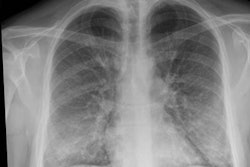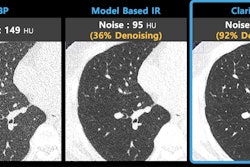Monday, December 2 | 11:00 a.m.-11:10 a.m. | SSC01-04 | Room S402AB
Patient-specific 3D-printed models based on coronary CT angiography (CCTA) scans allowed clinicians to obtain fractional flow reserve (FFR) measurements nearly as well as FFR derived from CCTA (FFR-CT) and invasive FFR in this study to be presented on Monday.The researchers from New York have developed a technique for simulating a patient's blood flow conditions on individually tailored 3D-printed models to measure FFR directly at the benchtop.
"3D-printed patient-specific coronary models enable repeatable benchtop experiments under controlled blood flow conditions," Kelsey Sommer, a doctoral student at the University at Buffalo, told AuntMinnie.com. "This approach can be applied to CT-derived patient geometries to emulate coronary flow and related parameters such as fractional flow reserve."
In all, the researchers built 33 patient-specific 3D-printed models based on the CCTA scans of patients who underwent invasive coronary angiography. To acquire FFR measurements, they connected individual models to a programmable cardiac pump that applied patient-specific blood flow conditions. Each 3D-printed model also had pressure sensors embedded inside the main coronary arteries that monitored flow rates.
Upon analyzing the data, the group found that the FFR measurements collected using 3D printing technology were about as accurate as the measurements obtained with FFR-CT, and both techniques were nearly as accurate as the reference standard, invasive FFR.
Patient-specific 3D-printed coronary phantoms provide clinicians with the opportunity to precisely measure physiological conditions to optimize and validate diagnostic software such as FFR-CT applications in a cost-effective way, Sommer and colleagues said.




















